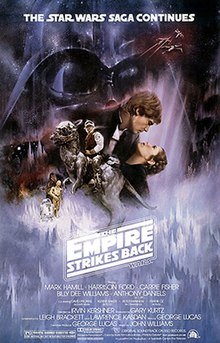Historical Context and Production
The 1980 release of “Star Wars Episode V – The Empire Strikes Back” marked a pivotal moment in cinematic history. Premiering on May 21st, 1980, the film was eagerly anticipated by fans and critics alike. Produced by George Lucas and directed by Irvin Kershner, the movie was the second installment in the Star Wars saga, following the monumental success of “Star Wars Episode IV – A New Hope.” The film expanded upon the universe introduced in the first episode, deepening the storyline and further developing the arcs of beloved characters such as Luke Skywalker, Han Solo, and Princess Leia.
The production of “The Empire Strikes Back” faced numerous challenges. One notable hurdle was the immense pressure to surpass the high expectations set by its predecessor. This installment was also significant for introducing new characters like Yoda and Lando Calrissian, whose casting decisions were crucial to the film’s success. Behind the scenes, the creative process was marked by a rigorous commitment to innovation, particularly in special effects. The team at Industrial Light & Magic (ILM) pioneered several groundbreaking techniques that would become standard in the industry.
The film’s initial reception was a mix of critical acclaim and commercial success. Upon its release on May 21st, 1980, “The Empire Strikes Back” quickly garnered positive reviews for its darker tone and complex narrative. Critics praised its character development and the dramatic twists that enriched the saga. Commercially, the film was a blockbuster, earning over $538 million worldwide, a testament to its widespread appeal and the growing fanbase of the Star Wars franchise.
The enduring impact of “The Empire Strikes Back” on the science fiction genre cannot be overstated. Its influence is evident in subsequent films and series that have sought to blend compelling storytelling with innovative special effects. For those interested in the film’s production details, interviews with cast and crew, as well as production notes, offer valuable insights. The legacy of the 1980 release of “Star Wars Episode V – The Empire Strikes Back” continues to resonate, underscoring its status as a seminal work in cinematic history.
Cultural Impact and Legacy
The release of “Star Wars Episode V – The Empire Strikes Back” on 21st May 1980 marked a pivotal moment in cinematic history, profoundly influencing both the Star Wars franchise and popular culture at large. This film introduced a darker, more complex narrative that delved into the emotional and psychological depths of its central characters, setting it apart from its predecessor. The dramatic arcs of Luke Skywalker, Darth Vader, and Princess Leia were meticulously crafted, offering audiences a multifaceted portrayal that has since become a benchmark for character development in genre films.
Luke Skywalker’s journey of self-discovery and growth, culminating in the shocking revelation of his parentage, introduced a level of dramatic tension that resonated deeply with audiences. Darth Vader’s transformation from a menacing antagonist to a tragic figure added layers to his character, enriching the lore of the Star Wars universe. Similarly, Princess Leia’s evolution from a diplomatic leader to a resilient warrior showcased the film’s commitment to strong, dynamic characters.
The influence of “The Empire Strikes Back” extends far beyond the Star Wars saga. Its narrative and technical achievements have been cited in countless films and television shows, while its iconic moments—such as the Battle of Hoth and the climactic duel between Luke and Vader—are frequently referenced in various media. The film’s impact is also evident in the thriving fan communities and the extensive merchandise it has inspired, from action figures to video games.
Over the years, “The Empire Strikes Back” has undergone significant critical reassessment. Initially met with mixed reviews, it is now widely regarded as the pinnacle of the Star Wars series. Influential reviews and scholarly articles have lauded its intricate storytelling and character development, often deeming it the best film in the franchise. Fan sites continue to celebrate its legacy, underscoring its enduring appeal and relevance.
In sum, the 1980 release of “Star Wars Episode V – The Empire Strikes Back” not only solidified the Star Wars saga’s place in cinematic history but also set a new standard for storytelling and character complexity in science fiction and fantasy genres. Its cultural impact and legacy remain unparalleled, as it continues to inspire and captivate new generations of fans.

